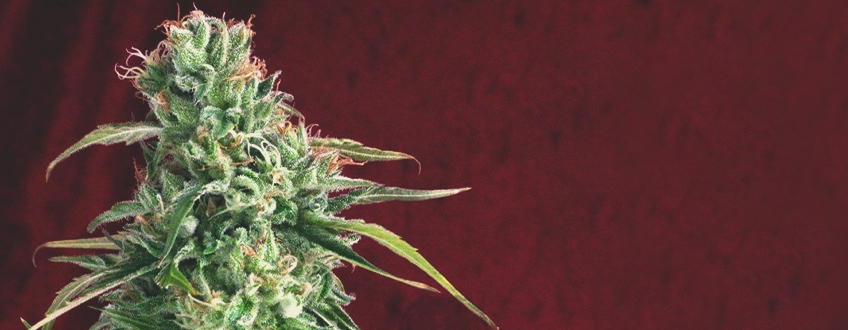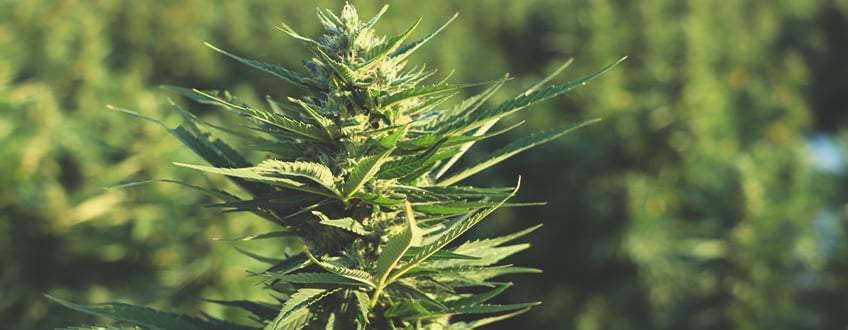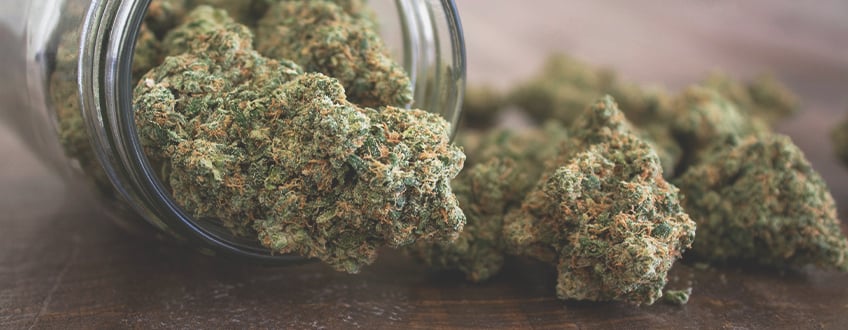.

RQS Interviews — Jimi From Reggae Seeds: Creator of a CBD Legend
Hi, I'm Jimi, Reggae Seeds founder and creator of the new wave of CBD that started with my strain Juanita la Lagrimosa. I have been involved in the world of cannabis growing and breeding for about 25 years. I am very happy of how I've been able to live, and what I've been able to accomplish.
At Royal Queen Seeds, we are constantly on the lookout for the best information and knowledge about cannabis. In our interviews, we talk to figures from all over the cannabis industry. Today, we have the pleasure of speaking with Jimi.
|
(Listen to it also in Spotify and Apple Podcast) |
|---|
| Listen to it also in Spotify and Apple Podcast |
How did your passion for cannabis come about?
You could say that it came about by accident. Little by little, I got to know this magical and unique plant, and, without me realizing, it was my world. Well, let's make the most of it.
My first crops were when I was about 20 years old. It wasn't that early. Until then we were from... well, we belonged to the generation of alcohol and all this horrible stuff, right?
So, at the age of 20 we started to discover cannabis, to grow the first plants without knowing too much about how they worked or how they were harvested, if they were male or female... very little information. The following year, at 21 or so, we started to get more information and to know what we were doing.
We were doing tests and, well, we screwed up one after the other. Of course, we got some of them right, didn't we? And I really started to get curious pretty soon. Well, the information was coming to us and, when we knew that the males were not so bad, that it was possible to make seeds and such, I began to try to see what happened—if with that little male and with that female, seeds would come out. Just like with cuttings and all this, we were trying things.
We were trying things without believing too much that it was starting to get into my life, my work, and my passion. It was basically just experimenting.
Reina Madre x New York Diesel are the parents of one of your most famous seeds, "Juanita la Lagrimosa". What were you looking for when you crossed them?
Well, actually, I was always doing some tests, and what I was looking for was not to lose the Reina Madre. I got the original Reina Madre cutting from an unreliable source, so I put it into flower directly without keeping a mother. And when I realized that yes, it was a Reina Madre, it was already well advanced in flowering. Then, I had to make it revegetate and all this; well, it's not that I love to do that trick, and they don't always survive.
At that time I was making a selection of New York City Diesel that I had bought at the first and second Spannabis, and I had some males there, like, in another room, to cut them and take them out. I took the pollen from one of the males and fertilised a Reina Madre as I did with all the others I had indoors, but only the bottom buds. I still got like 50 or 100 seeds from each plant.

What a nice coincidence to cross your path, just when you were looking to get a strain that wasn't so dominated by THC. Who would have imagined that it would end up being so widely used in the world to create cannabis genetics and give rise to a new generation of CBD?
Yes, yes. The truth is... well, I guess it chose me, because of the respect I've always had for it. Over time, I've always thought that it wasn't luck because I don't believe too much in luck, but damn! I am very grateful for it having chosen me, because I didn't even select Juanita myself. I had so many things to select that I gave it to a brother friend in Mallorca and I told him: "Take this, it looks very good, you do the selection; I have here who-knows-how-many selections of Blue Heaven with Russian... with several varieties". And this friend did it in Mallorca and he would tell me: "Wow, this is coming out very good!". Yes, yes, the truth is that it was luck; not luck, but a blessing, let's put it that way.
Could you briefly explain to us the roots and parentage of Juanita la Lagrimosa?
Well, the roots come from Reunion Island, from a Haze. It's not clear what Reina Madre is. It's a polyhybrid that Mario made. And then the New York Diesel, which is also uncertain where it came from. And, if what Soma said at the time of this variety was true, it's thought to be a Lemon Kush or something like that.
We talked to people in California, and there's a strain that leans a bit to that orange shade. And there were cases where those plants also produced CBD. So the genetics more or less were that, the base. Then, as I said, that's where it all came from, all the Reggae Seeds genetics came out of these crosses, let's say.
It was at a time when I felt quite tired of the strong effects of THC. I had even had some mental scares. There were some effects that I didn't... I didn't like. So I was looking for flavorful plants that would fill my taste buds. It was as if the strong effect was secondary, and, without intending to, I was selecting plants with those nuances, right? And I was introducing the CBD without even meaning to.
I didn't know that until I already had the seed bank and had been smoking it for a few years, but with the crosses of the plants I made, which had CBD (although I didn't know), the effect felt very good. On the other hand, when I smoked plants with very high THC... Gosh! No, it wasn't the same, it was much more difficult for me. It was more for recreational purposes, but it was very difficult for me in my day-to-day life.

What properties should a quality CBD seed have?
Well, the properties... It should have a good CBD ratio and, above all, it should have terpenes and it should be a vigorous plant—not too delicate, right? In general, there is always an exception for a plant that is very special and very delicate. But, in general: plants that have terpenes, that carry the genetics of the ancestors, and that are not too delicate—that more or less everybody can grow—without a very long flowering period.
"I am very proud to have created something that is benefitting the world and that people are using."
What do you think about other seed banks using your strains to create CBD genetics?
Cannabis is a world heritage plant, right? Let's start from there. I think it's a huge honour that my strains are helping other people, isn't it? What I don't find nice is the breeder's work not being recognized. I have used whatever genetics I have used from other banks, and I have always, always recognized the breeder and have thanked them when it had to be done. No, I don't ask for anything more than that; I don't think I want anything else but recognition.
But, then again, I am very proud to have created something that is benefitting the world and that people are using. As long as I know they are my girls... sometimes it's a little funny, and sometimes it's a little sad.
What do you think about autoflowering CBD strains? Do you plan to release any strains with these traits?
As long as I can offer quality, and one thing is for sure: that I can see it clearly. I'm not closed to anything, okay?
At the moment, there hasn't been a chance to create an automatic CBD strain. I know there is one, but I have so much work to do with the other varieties that I can't dedicate myself to doing automatics. But then I get to meet someone, or I already know people who have sometimes suggested it to me. I would like to do something, but it wouldn't be immediate.
If the opportunity arises, I won't hesitate to make a CBD automatic to which I can give some characteristics that I like. Provided that there is certainty... or maybe just a limited series, I don't know, but I'm not entirely closed to an automatic either.

In our seed bank, we have some CBD varieties, such as Dance World and Royal Medic, which are descendants of Juanita la Lagrimosa. What do you think of them?
Well, what can a father think about his daughters? That they are fantastic; they are genetics that people will enjoy a lot, in effect, in flavors—all of our genetics, they're made with heart and made for me. They are not exclusive, and they are done to my criteria. The same quality that Reggae can have, Royal has it, with its terpenes and qualities, the same as when we started all this.
"But I will never crossbreed according to trends... I can use what is currently popular—for but with my criteria, not other people's criteria."
Two of your best-known strains are Cannatonic and Juanita la Lagrimosa; what differences can you tell us between these two plants?
Cannatonic is basically a Dancehall. And Juanita would be the mother of this plant. Cannatonic would be Juanita crossed with Kalijah, which is more of a hybrid. It's a more compact plant, quite unstable in phenotype, and it's more of a polyhybrid plant.
Juanita, even if it's a polyhybrid, mirrors its mother more, which is Reina Madre, having airier buds and plants that stretch. Cannatonic is a more compact and productive plant, with firmer buds. It's a plant that's quite unstable when hybridising, although it should be noted that all phenotypes will come out monsters. But, just as Juanita is much more stable, Dancehall can be very variable, in both good and bad ways.

Where do you get the inspiration to create new strains? Do you look at what you think others would like, or do you create what you would like to use?
I always create what I personally would like to have.
When I test or make selections of plants, I see nuances that I like in each one, and I always cross them—I always try to do some crossbreeding. When we have rooms to produce seeds and we have pollen there, I take advantage of the pollen from whatever we have for the new things I am trying. It's quite like a lottery, but you're always following some ideas. Then it may go well or it may not, but anyway, I just experiment with nuances or special traits of varieties that I think can match well to create a hybrid.
But I will never crossbreed according to trends... I can use what is currently popular—for example, I can use American stuff—but with my criteria, not other people's criteria. Then let people enjoy (or not) what I have done.
How do you choose the specific genes you want to achieve in your final cross?
The first thing is the parents. And if you are going regular... the males, I have never taken them to flowering, to do a selection. Let's say that structurally, by the smell, by how I see it at a glance—I choose it and, more or less, it has always worked.
Then, for the female to be used, what you look for is that it doesn't show hermaphroditism, that it has a good structure; if possible, that it clones well and is vigorous. As long as you can get that. If it's a sensitive or strange plant, but it has some nuance that really appeals to you, then you can always give it a go.
You should try to avoid hermaphroditism as much as possible, because they are all very affected by this issue. With regular plants, in general, the usual little banana always comes out... Whenever possible, take the female plant to the end of flowering to see how it is. If it doesn't show any signs of hermaphroditism, it's a great plant. If it has very little, well, then hermaphrodite generations can come out—that gene will always be there, that's a possibility.
Do you think CBD could be helpful when it comes to cannabis legalization?
The truth is that I think it could help a lot. Both to normalise it, and for people to approach it without being so afraid of it. With THC, we have gone to such extremes that, depending on the person, they're not ready for it. I am not saying that this is wrong; far from it, quite the opposite. It's also another way, another art, and to the people who work for it and are getting those impressive THC levels, well done for them too.
THC is more special, it's a psychotic, it can even abuse the brain. So CBD reaches a lot more people apart from its medicinal value.
We don't want to be crazy-high all day long, or not everyone has the ability to smoke such strong stuff. So it reaches a lot more people, it normalises it. They lose their fear and they really get what it is; a plant, a medicine for everyday use or for a health condition. I believe that CBD can be of great help to normalise cannabis.
How have you seen medical cannabis evolve over the last 10 years in Spain? What do you think lies ahead?
In general, it's been a pretty wild evolution, also influenced by the market. We have lost a lot of the bases and the search for genetics or varieties in favor of the market. So we have lost a lot of genetics and we have made gains... well, in knowledge or in the quality of what we have. But, let's say that we breed a lot and we take advantage of the elite clones we have, and we don't select new things anymore. So you limit yourself to that, to that cross, that plant with the other one—there aren't several phenos or you don't look for them as much.
We have lost in genetics, but we have also gained as an industry. It has fed a lot of people, it's the law of life; as long as it generates so much money and there is such a big market, there will always be people trying to benefit from it. There are two sides to it, if you look for the other side as well.

What role do you think the pharmaceutical industry can play in the development of strains used for medical cannabis?
Phew, the pharma industry... I like you asking me such a question. Let's see, I don't want to be negative; for people in general, I think it's good. But for breeders, I think it will be bad, because if at some point it becomes legal, they will ask for things that most of us will not be able to reach—those studies or those tests, those facilities. So I think the monopoly and the type of genetics will change hands.
Pharmaceuticals are a much colder thing, it's a business and they are going to look for results and percentages and ratios and all this...







































